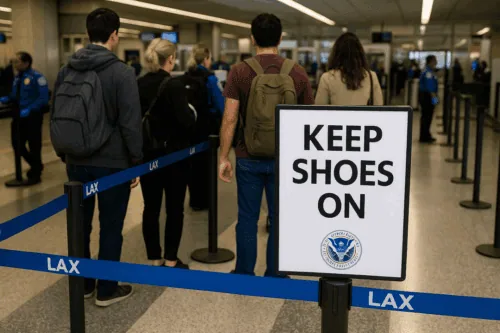Welcome to the vibrant world of popular culture! Here, music, media, fashion, and technology converge to reflect and shape our times’ societal norms and values. Popular culture is a gateway to understanding broader social dynamics and issues for many. This guide explores how to define popular culture and dives deep into its impact on society, media presence, and its undeniable influence on civil rights and cultural diversity.
Whether you are a high schooler eager to understand the forces shaping your world or a mid-career professional looking to engage with more diverse cultural viewpoints, we have your insight and context. Popular culture is not just about what’s trending; it’s a reflection of our collective experiences and aspirations. It shapes our understanding of the world and each other, making it a crucial element of modern society.
Ready to explore how popular culture weaves through various facets of life and how it can be leveraged for social change? Let’s dive in!
Historical Evolution of Popular Culture
When we understand how to define popular culture, we must look back at its beginnings. History shows that popular culture has morphed extensively alongside societal changes. Initially, it was shared only through folklore and verbal traditions, passed from generation to generation. But, as technology advanced, so did how cultural expressions were shared.
The Industrial Revolution: A Turnstone in Popular Culture
The Industrial Revolution marked a significant turning point. It introduced mass production, bringing books, newspapers, radios, and television into everyday use. So, information and cultural products became more accessible, shaping public tastes and preferences. The era of the Industrial Revolution paved the path for the rapid spread and evolution of popular culture elements.
The Twentieth Century and Beyond
Digital technology gave popular culture a global platform. Films, music, and, eventually, the Internet have allowed cultures to cross borders as never before. This accessibility has expanded the reach of cultural artifacts and the speed at which they travel.
- Radio and Films: In the early 20th century, radio became a new means to access music and news, heavily influencing public opinion and culture.
- Television: In the mid-century, television became central in homes, affecting daily life and public discourse.
- Internet: The late 20th and early 21st centuries saw the rise of the Internet, a powerful landmark that has arguably had the most significant impact on popular culture, connecting people globally.
Now that we have seen the history of popular culture, we can see that its definition isn’t static; it evolves with society. Each era brings new forms and channels for expression, making popular culture a dynamic, ever-changing portrait of human civilization. This journey not only entertains but educates, influencing societal norms and values.
Components of Popular Culture
Now that we understand the historical evolution of popular culture, let’s explore its main components. Popular culture encompasses a wide range of elements that shape everyday social practices.
Media and Entertainment
Media is a cornerstone in defining popular culture, encompassing:
- Television Shows: Series and commercials reflect societal norms and deliver shared experiences.
- Music: Hits and anthems provide a soundtrack to different eras, influencing moods and attitudes.
- Movies: Films contribute narratives and icons that shape societal values and aspirations.
Fashion and Lifestyle
What people wear and how they express their lifestyle also mark fundamental aspects of popular culture:
- Apparel: Fashion trends signify social affiliations and generational shifts.
- Gadgets: Tech gadgets like smartphones, smart watches, smart rings, and smart-everythings influence social interaction and information processing.
- Leisure Activities: From wellness practices to culinary preferences, lifestyle habits indicate cultural priorities.
Social Media and Digital Interaction
Digital outlets have become crucial in shaping popular culture today:
- Social Networks: Platforms like Facebook and Twitter allow for the viral spread of trends and opinions.
- Content Creation: Blogs and YouTube channels empower individuals to contribute to and alter the media landscape, blurring the lines between producers and consumers.
Influence of Popular Culture on Society
After exploring the components of popular culture, it’s crucial to understand its societal impact.
Shaping Public Opinions and Behaviors
Popular culture plays a vital role in molding public views and actions.
- Persuasive Media: News, ads, and public figures sway opinions and decisions on current issues, especially during election years.
- Role Models: Celebrities and influencers often set norms that many strive to emulate.
Supporting Collective Identity and Cohesion
It encourages a sense of belonging among diverse groups.
- Shared Experiences: Common cultural references create bonds across different backgrounds.
- Traditions: Festivals and public holidays promote unity and communal values.
Driving Social Change
Popular culture can also propel societal advancements.
- Progressive Narratives: Stories that challenge the status quo encourage societal evolution.
- Visibility: It brings overlooked issues to public attention, prompting dialogue and action.
This influence prompts reflection on how underlying messages in popular culture shape the societal structure. Understanding how to define popular culture helps us comprehend its power within society.
Popular Culture in Media
Building on the impact on society, let’s examine how the media is used to spread popular culture.
Television and Film
Television shows and films are powerful avenues that reflect and shape cultural norms and values.
- Dramas and Comedies: They often reflect contemporary issues, mirroring society’s challenges and quirks.
- Documentaries: They bring real-world issues into living rooms, broadening viewers’ horizons and deepening understanding.
Music Industry
Music crosses cultural divides and can become a global language that connects people.
- Charts and Hits: Popular music tracks entertain and often become anthems for generations.
- Music Videos: These blend visual art with music, extending the reach and influence of artists.
News Media
News outlets are pivotal in highlighting trends and issues central to popular culture.
- Journalism: Investigative pieces and feature stories highlight societal trends and undercurrents.
- Opinion Pieces: These forums allow thought leaders to discuss and disseminate ideas that can shape the public agenda.
As explained, media not only distributes but also authenticates and critiques elements of popular culture, making it indispensable in exploring how to truly define popular culture.
Cross-Cultural Exchange through Popular Culture
As we’ve seen, media plays a pivotal role in spreading popular culture. Now, we look into its global impact.
Globalization of Cultural Products
Popular culture bridges continents, bringing diverse cultures into closer dialogue.
- International Cinema: Films from different countries gain global audiences, promoting mutual understanding.
- Music Collaborations: Artists from varied backgrounds collaborate, blending styles and audiences.
Technology as a Facilitator
Moreover, technology amplifies this exchange by providing platforms that reach worldwide audiences.
- Streaming Services: Platforms like Netflix and Spotify allow instant access to global content.
- Social Media: These networks enable fans and critics to share and discuss content across borders.
Educational and Cultural Insights
Additionally, this exchange stimulates a deeper understanding of global issues and celebrations.
- Educational Resources: Documentaries and series on platforms offer insights into worldwide cultures.
- Cultural Festivals: Events like Cannes or Sundance showcase global creativity and foster international cooperation.
This cross-cultural exchange enriches societies, promoting DEI in the workplace. Understanding how to define popular culture includes recognizing its role in global dialogue.
Challenges and Criticisms of Popular Culture
While popular culture facilitates connectivity and understanding, it also faces its share of criticisms.
Commercialization of Culture
One significant issue is the commercialization of cultural expressions.
- Loss of Authenticity: Unique cultural aspects can be diluted in the rush to monetize.
- Market Driven: Often, what is popular is dictated more by market forces than by cultural significance.
Perpetuation of Stereotypes
Another concern is the reinforcement of stereotypes through repetitive narratives.
- Media Representation: Media sometimes perpetuates narrow portrayals of gender, race, and class.
- Limited Perspectives: Popular culture often highlights dominant group views, sidelining minority voices.
Overconsumption and Environmental Impact
Furthermore, the production and consumption of popular culture contribute to environmental stress.
- Waste from Products: Mass-produced cultural goods, like magazines and merchandise, create significant waste.
- Energy Usage: Digital streaming and large-scale events require vast amounts of energy.
By exploring these challenges, we better understand how to define popular culture, recognizing both its strengths and areas for improvement. This reminds us to think critically about the culture we consume and how we do so.
The Role of Popular Culture in Promoting Civil Rights and Cultural Diversity
Beyond the criticisms, popular culture also plays a pivotal role in advancing civil rights and promoting diversity.
Amplifying Voices
Media can serve as a platform to highlight diverse voices and stories.
- Inclusivity: Shows featuring diverse casts or stories can challenge prejudices and foster inclusivity.
- Advocacy: Influential figures can use their platform to advocate for social justice and human rights.
Educational Outreach
Through informative content, popular culture educates about historical struggles and accomplishments.
- Documentaries: They expose injustices and share stories of resistance and resilience.
- Public Programming: Educational shows and public discussions can enlighten audiences on social issues.
Creating Dialogue
Pop culture stimulates conversations around complex topics, helping to break down barriers.
- Social Media Campaigns: Effective use of platforms can generate widespread engagement and support for diversity initiatives.
- Art and Performance: These can be powerful tools for expressing and addressing cultural and racial experiences.
This active role of popular culture in enhancing civil rights and cultural diversity shows its potential as a force for societal change. By understanding how popular culture is defined, we recognize its capacity to shape a more inclusive world.
FAQs
What is the definition of popular culture?
Popular culture, or pop culture, encompasses the set of practices, beliefs, and objects that dominate society at a given time. It includes media, music, fashion, and technology, reflecting and shaping societal norms and values.
How does popular culture influence individuals?
Popular culture influences people by shaping their perceptions, behaviors, and identities. It offers a common ground for social interaction and often provides a framework for personal and collective identity.
Can popular culture lead to social change?
Yes, popular culture can be a powerful tool for social change. It raises awareness, challenges the status quo, and promotes inclusivity and diversity. It engages and mobilizes people around societal issues, encouraging dialogue and action.
Why does popular culture face criticism?
It often faces criticism for perpetuating stereotypes, driving consumption patterns that may not be environmentally sustainable, and prioritizing profit over cultural authenticity. Critics argue that it may dilute or misrepresent cultural expressions and values.
How can we use popular culture positively?
We can use it to educate, unify, and inspire. By promoting diverse and inclusive content, we can leverage popular culture to enrich our understanding of the world and contribute to societal well-being.
Conclusion
Popular culture is more than just entertainment; it’s a vibrant expression of societal values, changes, and struggles. From its evolving nature through history to its significant role in media and societal movements, popular culture influences nearly every aspect of life. It brings to light pressing issues, fosters global connections, and challenges social norms.
However, alongside its many benefits, it’s crucial to stay aware of its ability to perpetuate stereotypes and its environmental impact. By actively engaging with and contributing to more responsible and inclusive forms of popular culture, we can help shape a society that values diversity and equity.
Join Diversity Employment
Join Diversity Employment and upload your resume or post a job today! We prioritize a culture of inclusivity and understanding. Whether you’re seeking opportunities or offering them, you’re contributing to a community dedicated to fostering diverse and enriching workplace experiences. Together, let’s embrace the positive aspects of popular culture and leverage them to enrich our professional and personal lives.
Remember, each choice in what we watch, listen to, and engage with has the power to influence our culture and society. Let’s make those choices count toward a more inclusive and diverse world!




